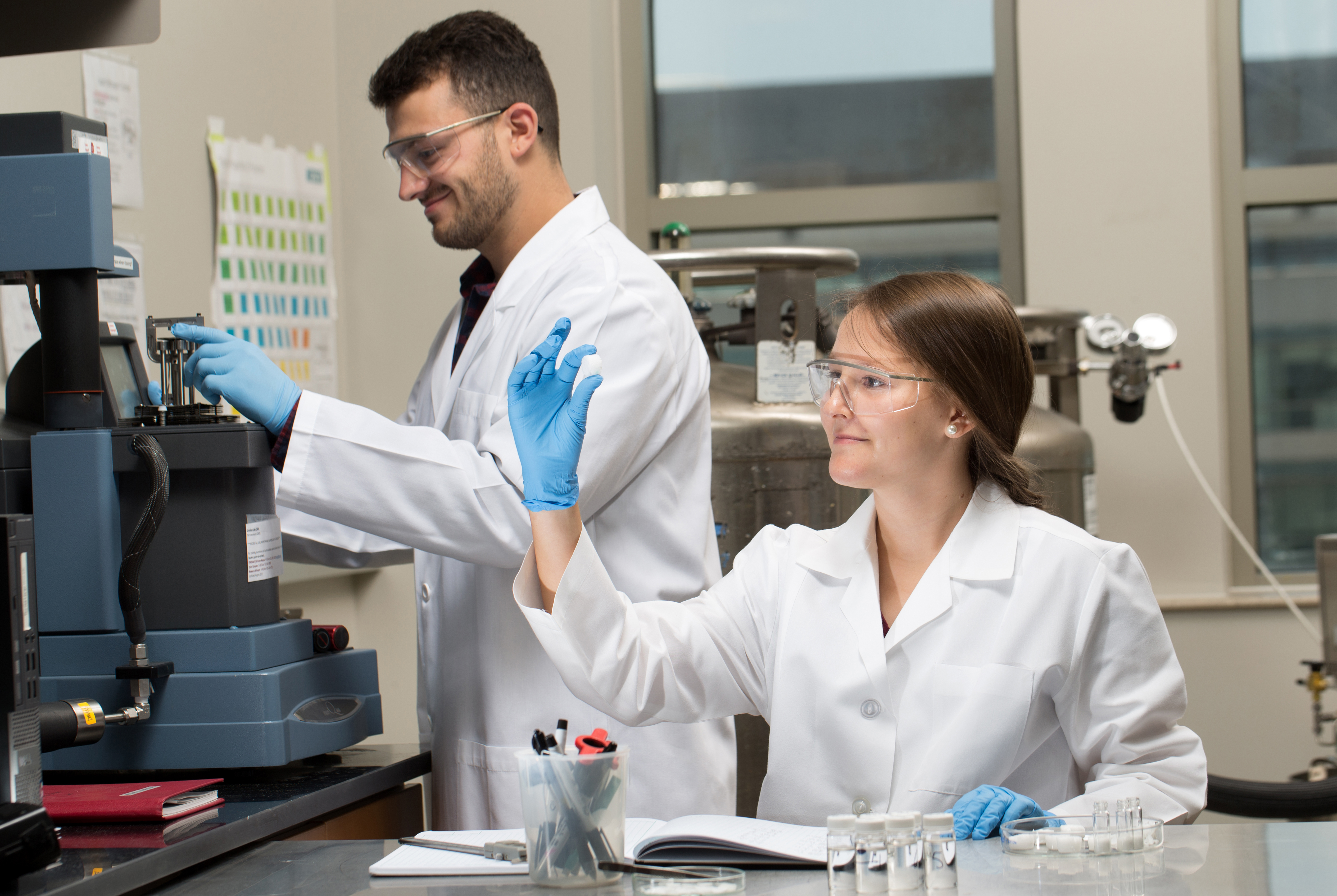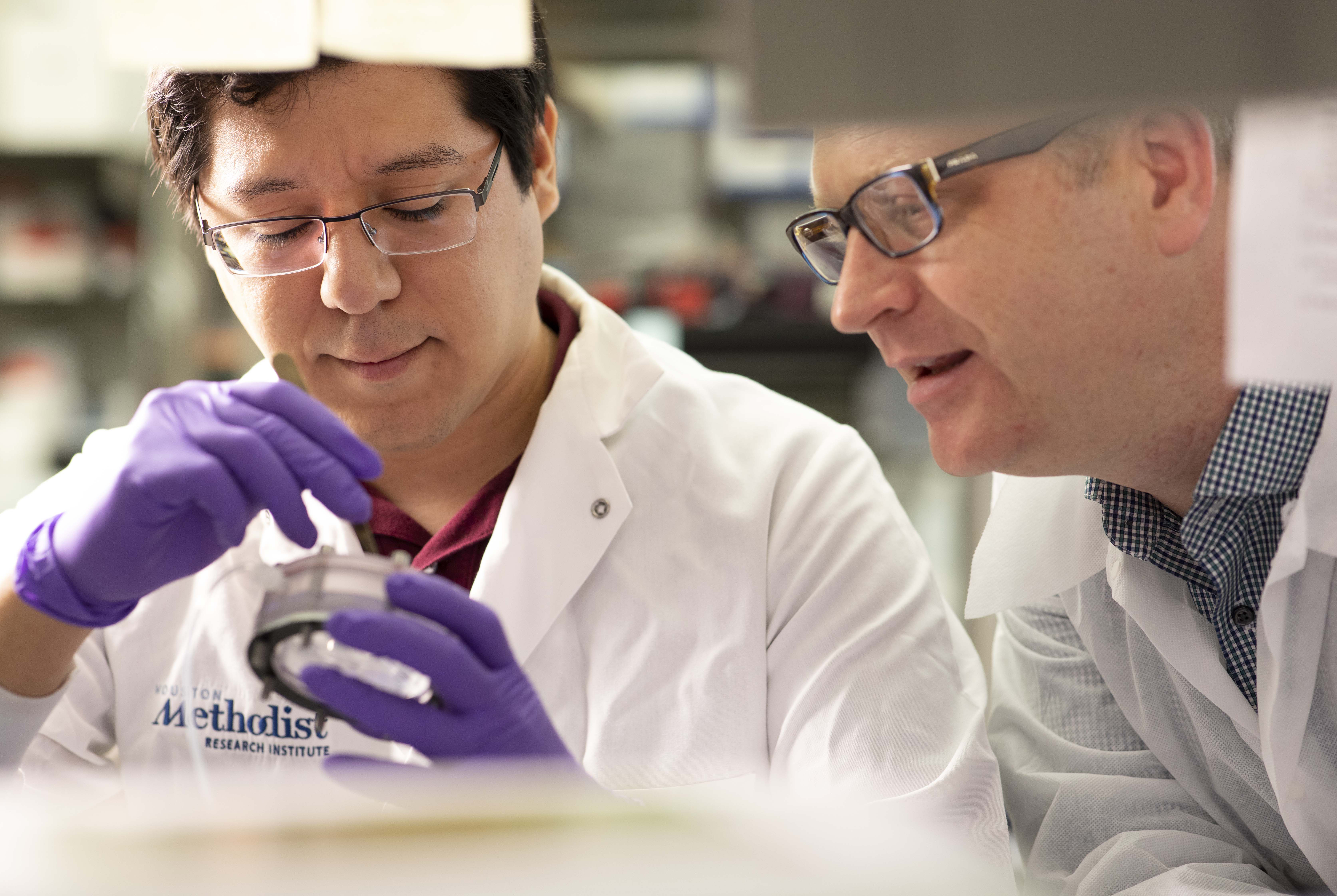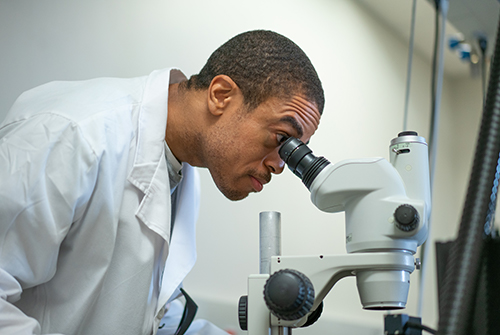 The proposed Biomedical Engineering Design Studio, to be located in the Emerging Technologies Building, will be a space tailored to the specific needs of biomedical engineering students.
The proposed Biomedical Engineering Design Studio, to be located in the Emerging Technologies Building, will be a space tailored to the specific needs of biomedical engineering students.
Students in Texas A&M University’s Department of Biomedical Engineering are learning to create innovative solutions for some of the most pressing medical issues facing individuals around the globe. They also are working with companies and clinicians around the country to address these needs. Ideally, these students would have access to a collaborative space that offers access to medical-specific models, tools and supplies as well as audiovisual capabilities to communicate with remote partners anywhere in the world—from the operating room to the African desert.
However, a space tailored to the specific needs for teaching biomedical engineering is not currently available—which is why the department’s leaders are working with the Texas A&M Foundation to identify funding to outfit a state-of-the-art Biomedical Engineering Design Studio. “We want to create a space where our students can immerse themselves in the design process and have tools and equipment that are not readily available other places on campus,” said Professor of Practice James Machek.
Students currently use the Fischer Engineering Design Center, a makerspace that serves all engineering students but doesn’t offer specific biomedical engineering equipment. “We’re not looking to recreate what the college already has,” Machek said. “We’re looking to add resources and capabilities that don’t exist and also have a ‘home base’ where these students can coalesce to work on their projects or work in teams when classes aren’t meeting.”
The proposed space, which will be located in the college’s Emerging Technologies Building, will foster an entrepreneurial mindset based on teamwork and design. Students will have access to a variety of specific medical resources such as anatomical models and virtual reality tools, as well as electronics and chemical and biological test equipment. The space will also include specialized hand tools, 3D printers, laser machining tools and other prototyping equipment. Critical infrastructure such as large-screen televisions, HD cameras and high-fidelity audio for effective communication will further allow students to virtually meet with clients, researchers and medical professionals.
Designing Health Innovation
The department is continuously assessing its ABET-accredited program and always looking for improvements while maintaining quality and currency to prepare students for entering the biomedical field. “Preparing students to succeed in this rapidly changing industry, which now includes things like artificial intelligence and robotics, is a major priority of ours,” said Dr. Mike McShane ’94, biomedical engineering department head and holder of the James J. Cain Professorship II.
Based on internal observations and feedback from external stakeholders—including an advisory board comprising representatives from the medical device industry, clinicians and academic leaders—the department launched a revised curriculum in 2013 with significant enhancements to the design experience. The new curriculum takes content that was previously only covered in the two senior-level “capstone” design courses and distributes it over multiple years.
 The proposed lab will support students’ progress as they go through the design course sequence and help them create innovative medical prototypes for prominent industry and clinician sponsors.
The proposed lab will support students’ progress as they go through the design course sequence and help them create innovative medical prototypes for prominent industry and clinician sponsors.
While design work has been part of the department’s curriculum in some way since 1972, there is now an expanded focus on medical device design innovation starting in sophomore courses that culminates in a senior year capstone project. During the course of their last two semesters, undergraduates work with sponsors as part of a project aimed at designing and fabricating a medical device or system. The new curriculum is scaffolded as follows, which ultimately prepares students for the capstone experience.
- Year One: Engineering students who have not been accepted into the program study diseases as well as types of devices used for treatment, such as pacemakers.
- Year Two: Students who are officially biomedical engineering majors learn about federal agencies, risk management and disease control. Working in teams, they begin creating small-scale design projects.
- Year Three: Students explore the demographic and ethnographic needs for design solutions, the development of design proposals, and the patent landscape and design challenges.
- Year Four: Students pull all the pieces together to develop a prototype based on the needs of industry and clinician sponsors such as Texas Children’s Hospital, Houston Methodist Hospital, Baylor School of Medicine, Becton Dickinson, Alcon, Genentech, Becton Dickinson and Abbott. Approximately 30 capstone projects are completed annually.
Solving Health Problems
The proposed lab will support students’ progress as they go through the design course sequence and help them create innovative prototypes, such as the one that an Aggie team designed for sponsor Texas Children’s Hospital during their capstone project.
These seniors were challenged to find a solution to assist women who have suffered an obstetric fistula. This condition, which is caused by an obstructed and prolonged labor, affects more than 40,000 women in developing countries each year.
While preventable by modern labor and delivery care, this condition can be fixed by surgery. However, the prolonged labor also irreparably damages the sphincter muscle, causing these women to live with persistent incontinence that can lead to chronic infection, depression and social isolation. “In low socioeconomic areas like these, women rely on social connections to make a living, have a husband and have community support,” said Dr. Julie Hakim, an assistant professor in Texas Children’s Hospital Division of Pediatric Adolescent Gynecology. “If you’re ostracized, that can be really damaging considering the tenuous social structures that exist.”
 The space will include specialized hand tools, 3D printers, laser machining tools and other prototyping equipment. Critical infrastructure such as large-screen televisions, HD cameras and high-fidelity audio for effective communication will further allow students to virtually meet with clients, researchers and medical professionals.
The space will include specialized hand tools, 3D printers, laser machining tools and other prototyping equipment. Critical infrastructure such as large-screen televisions, HD cameras and high-fidelity audio for effective communication will further allow students to virtually meet with clients, researchers and medical professionals.
This five-member team knew their design needed to be simple, cost-effective and discreet. “The size constraint of the female urethra was one of our main challenges. Designing a mobile mechanism with a maximum diameter of 3.5mm is extremely restricting,” said Sarah Jones ’20. “Additionally, the design was primarily controlled by our goal to treat women in underdeveloped regions with limited resources. This limited the materials and added an additional requirement to be powerless, with no batteries or charging necessary.”
With these conditions in mind, the students developed a device featuring a smooth bulb with slits on the side that can be inserted into the urinary tract. Tapping knowledge from the oil and gas industry, the team developed an easy-to-use turn-knob valve that controls the collection and release of urine. The prototype can also be safely sanitized in boiling water.
The team filed for a provisional patent and presented the prototype at an obstetric fistula conference. The response has been promising, and the device could also serve an additional 200 million women who have urinary incontinence due to aging, stress and other factors. This invention could be a meaningful addition to the global urinary incontinence device market, which was valued at $1.6 billion in 2016 and expected to increase.
While their prototype now awaits next steps, Hakim believes these Aggies now see the wide range of possibilities that await them in their career. “I love bringing students a project with global repercussions—serving low-resourced women in another continent is part of a global commitment to women’s health advancement while also serving women in Europe and North America who have their own unique challenges with incontinence and the struggles that come with that,” the physician said. “I want to inspire these students to think about their profession in a broader sense, especially in how they can make the most of the opportunities and challenges that arise to advance health care in the most meaningful ways.”
To learn how you can support the new Biomedical Engineering Design Studio, contact John Bernheim, senior director of development for the College of Engineering, at (979) 458-6564 or by using the form below.